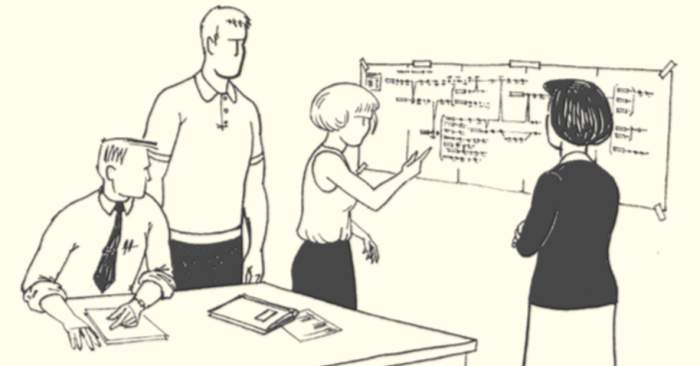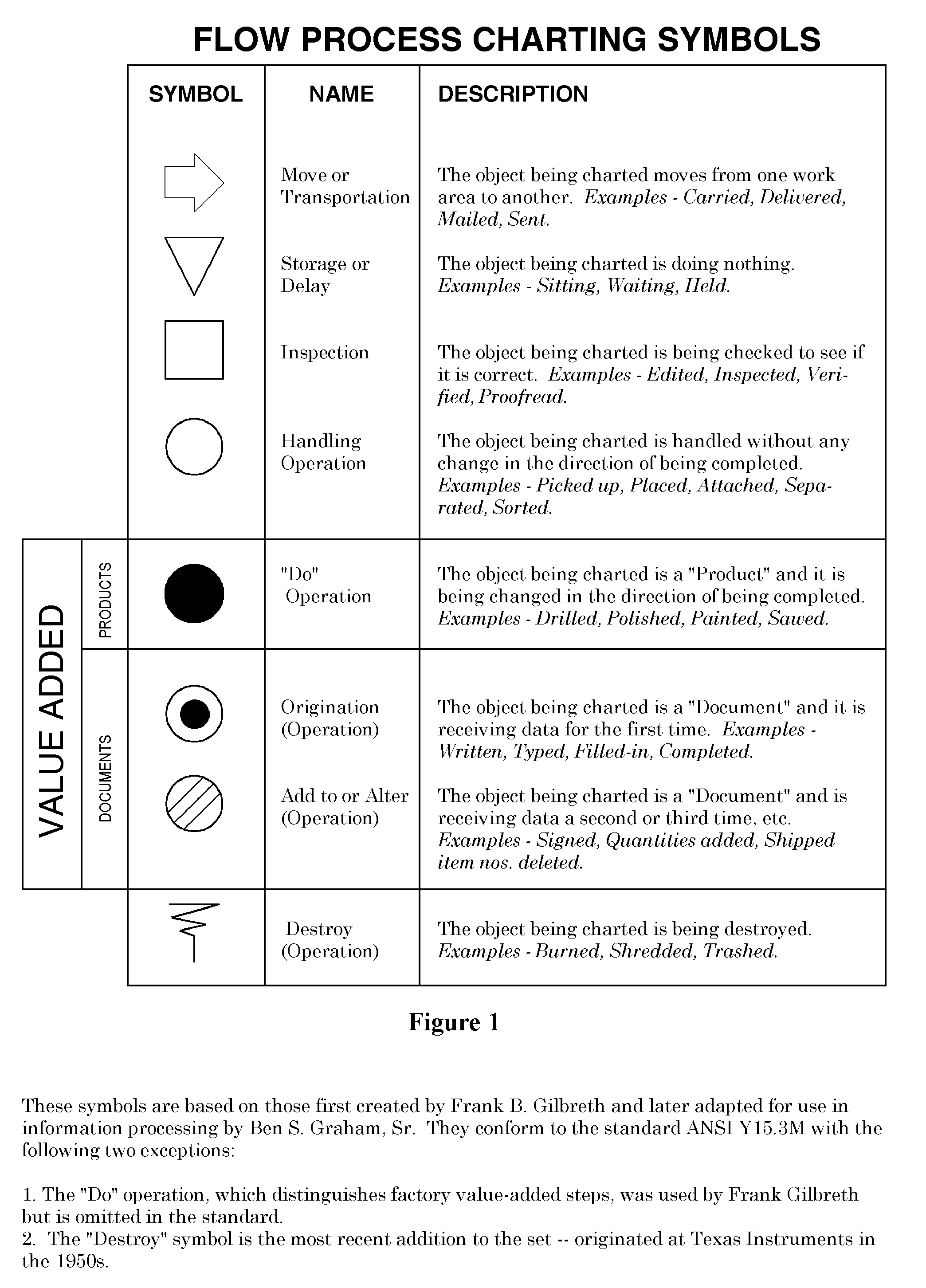

Employee Participation and Work Simplification
By Dr. Ben S. Graham, Jr.Chairman
The Ben Graham Corporation
© Copyright 1994-2015, The Ben Graham Corporation. All rights reserved.
Links may be established to this paper.
Employee Participation
Knowledge of the work itself is crucial to improving the work. The people who do the work are the best source of that knowledge. So we recommend that employees participate in work improvement.
In addition to knowledge of the work, it is necessary to approach work improvement with fresh perspectives. Therefore, knowledge of the work alone is not sufficient. The two ingredients that combine to produce outstanding improvements are:
- Knowledge of the work.
- Fresh perspectives for accomplishing the work.
It is often popular to argue that people who do the work cannot discover or accept fresh ideas because they are ingrained in the current processes and thus blinded to fresh opportunities. Invariably, this argument is promoted by people who do not know the work well. Unfortunately, when this argument prevails, it results in organizations abandoning the greatest source of work knowledge available, their workers, and settling for superficiality.
The obvious and overwhelmingly most powerful way to gain knowledge of the work is to get it from the people who know the most about it. As for their ability to generate and accept fresh perspectives, it is far easier to get an experienced person to see their work with fresh eyes than it is to give years of first-hand experience to someone who has not done the work.
The tools of Work Simplification are used to give fresh eyes to experienced people. Over and over again it has been established that you do not have to ignore experience to achieve creativity.
If we want to include in the improvement process, people with little or no firsthand experience, then let's do it, but have them join veterans who know the work thoroughly. The ideas of the newcomers are just as likely to be based on their own previous experience as the ideas generated by the veterans. Without the work knowledge of the veterans, newcomers' ideas are likely to address the work with superficial, bureaucratic assumptions. Often they will emphasize equipment. Quality of product and service to customers declines as the organization becomes equipment focused. Then when the old]timers are discharged these changes become irreversible. Bureaucratic assumptions are institutionalized and, eventually, employees become alienated by the no-brain processes of their work.
The accumulated judgment and experience of employees is far too important to scrap in favor of equipment. We can build finer processes that do a far better job: raising quality, dealing with customers more personally, accomplishing far more, faster, and at a lower cost. Simultaneously, our employees can take pride in their accomplishments and the prosperity they have earned for themselves. The key is that we start with the accumulated knowledge that we already have and carry it farther. We don't throw out our accumulated wisdom and start over. Work Simplification provides us with a methodology for doing this.
Work Simplification
Work Simplification is the organized application of common sense. It is achieved by gathering and organizing facts about the work and displaying them so that they can be questioned and improved by knowledgeable people. Improvements include eliminating entire processes or portions of processes that are unnecessary, combining tasks, changing the sequence in which tasks are accomplished, changing the location where they are done, changing the people doing them and changing how they are done. (Of these changes, the greatest benefits and the least costs are achieved by eliminating the unnecessary. On the other hand, the greatest costs and sometimes-negative benefits result from changing how tasks are done.)
There are many ways of displaying work but the greatest potential for improvement is achieved when we focus on process. We focus on process by recording the way work is done step by step, in sequence. Two considerations are key:
- What do we actually record?
- How much detail do we get into?
We record the steps of accomplishing work by focusing on the physical entities being worked on. Most of the time these entities are either documents (in various stages of completion) or materials (in various stages of conversion into finished goods). Occasionally, we may chart people, (a patient in a hospital process, or a prisoner in a legal process, etc.). By charting the work itself we focus on the mission of the organization and avoid being overly distracted by specific resources for accomplishing it.
The level of detail in our charts should call our attention to the tasks of the work without getting into the detail of how they are performed. For instance, we record that a person completes a form (an application, a sales order, a ticket, a patient diagnosis card, etc.), but we do not record the detail of individual entries and the skillful rationale that went into knowing how to make those entries. We record that the surgery is performed or a product is tested but we do not try to learn and record the skills of the surgeon or the inspector. That information will be readily available to us, as needed, during the improvement sessions, because of employee participation.
Symbols
- Recording the steps is made easy by using symbols that break down the work into crisp, readily understood categories. These symbols help the person preparing the chart to see the work in manageable steps and provide the improvement teams with a much]needed common language. Because of their simplicity, the symbols can be used on any type of work: legal, agricultural, medical, financial, research, etc. It makes no difference whether the person writing on a form is a factory worker or a nuclear scientist, an accountant or a sales representative... The symbol simply shows that data is entered. It makes no difference if the product was delivered to a warehouse, a courtroom, an operating room, or Buckingham Palace. The symbol simply shows that it moved.Because the symbols are well conceived, they don.t leave out portions of the work, nor do they overlap. The differences between the symbols are crisp, as follows:
- An entity is either moving or not moving. If it is moving the symbol is an arrow. The rest of the symbols are stationary.
- Among the stationary symbols, the triangle means that nothing is happening. The rest of the symbols all indicate that something is happening.
- The difference between doing work or checking work is the difference between a circle and a square, and
- If a circle is darkened in, it means that the work actually caused a physical change in the entity being charted.
These symbols (see figure 1) are mutually exclusive, comprehensive and universal - qualities that give them immense power as categories for breaking down the work. Their simplicity also assures that we describe the work in terms that are easily understood. People seeking to understand one another while they actually solve their problems couldn't ask for more. (Unfortunately, people aren'talways serious about wanting improvement to succeed and sometimes they would rather look impressive than be understood. Work Simplification techniques serve those who would rather get results.)

Most people can learn the symbols with little effort. However, drawing process charts calls for more than simply listing steps because accomplishing work usually involves multiple interrelated flows. To accommodate multiple flows, we draw our charts horizontally, use a label to assign each entity to a separate line, and use several conventional display techniques to indicate the interrelationships. Figure 2 is an example of a portion of such a chart. It displays all of the conventional display techniques needed to chart work processes. The fact that a person can read it without training speaks for its potential.

Figure 2
These process charts make the opportunities for improvement so apparent that changes can actually be made. (Unfortunately, some managers aren’t ready for that.) And, these process charts can be prepared very quickly. Once a person is familiar with the charting technique, major processes with over a hundred steps involving numerous entities can be charted in a single day. (This assumes that the person preparing the chart has ready access to and willing cooperation from the people doing the work.)
Keeping in Touch with Reality
- Employee participation and Work Simplification provide us with an unbroken pathway between reality and decision. Employee participation puts us solidly in contact with reality and process charting gives experienced people the perspective they need to discover totally new ways of accomplishing the work that are as realistic as they are radical.Recently, many organizations have committed large investment and strong executive support to high profile efforts at reengineering. Unfortunately, some of them wound up .reguessing. rather than reengineering, and their poor success rates reflect this. Some were forced to guess because they did not include the people who were in touch with the work reality. (They may have intentionally avoided asking their people because their principal goal was to get rid of them.) Some were forced to guess because they failed to chart the process or they charted it too abstractly. They may have failed in their charting because they mistakenly thought it would take too long or because the only charting they knew was superficial or because they couldn't get access to the information to make proper charts without the help of the people they intended to discharge... It doesn't matter why they were forced to guess. They broke the chain between reality and decision, and failed.
Through the centuries people have speculated on how firmly they should grip reality as they make decisions governing the changes in their lives. Some recommend against flights into fantasy, convinced that solid attention to reality produces dependable results while fantasy builds futures we don't even want to live in. (And, they are often right.) These people tend to become cynical and set in their ways. Others recommend ignoring reality, equally convinced that breaking loose is the key to creativity while a firm grip assures unimaginative decisions. (And, they are often right.) These people tend towards currently popular fads and irresponsibility. Both underestimate human genius while they take sides over which way to produce unsatisfactory results.
Employee Participation with Work Simplification blends a firm grip on reality with the dramatic insight that comes from proper preparation of a problem for solution. So why don't more people do it? (Why don't people eat well and exercise when they know it will give them a better life?) The catalogue of reasons why people fail in cooperation and imagination is long and disappointing. Included are thousands of notions that underestimate people, that strive for tight control of the credit for the ideas and the wealth that they will create, etc. But the catalogue of reasons for doing it need not be long at all. We are able to do it. It saves time, we benefit from the genius and creativity of more people, and it is a fine way to live and prosper together.